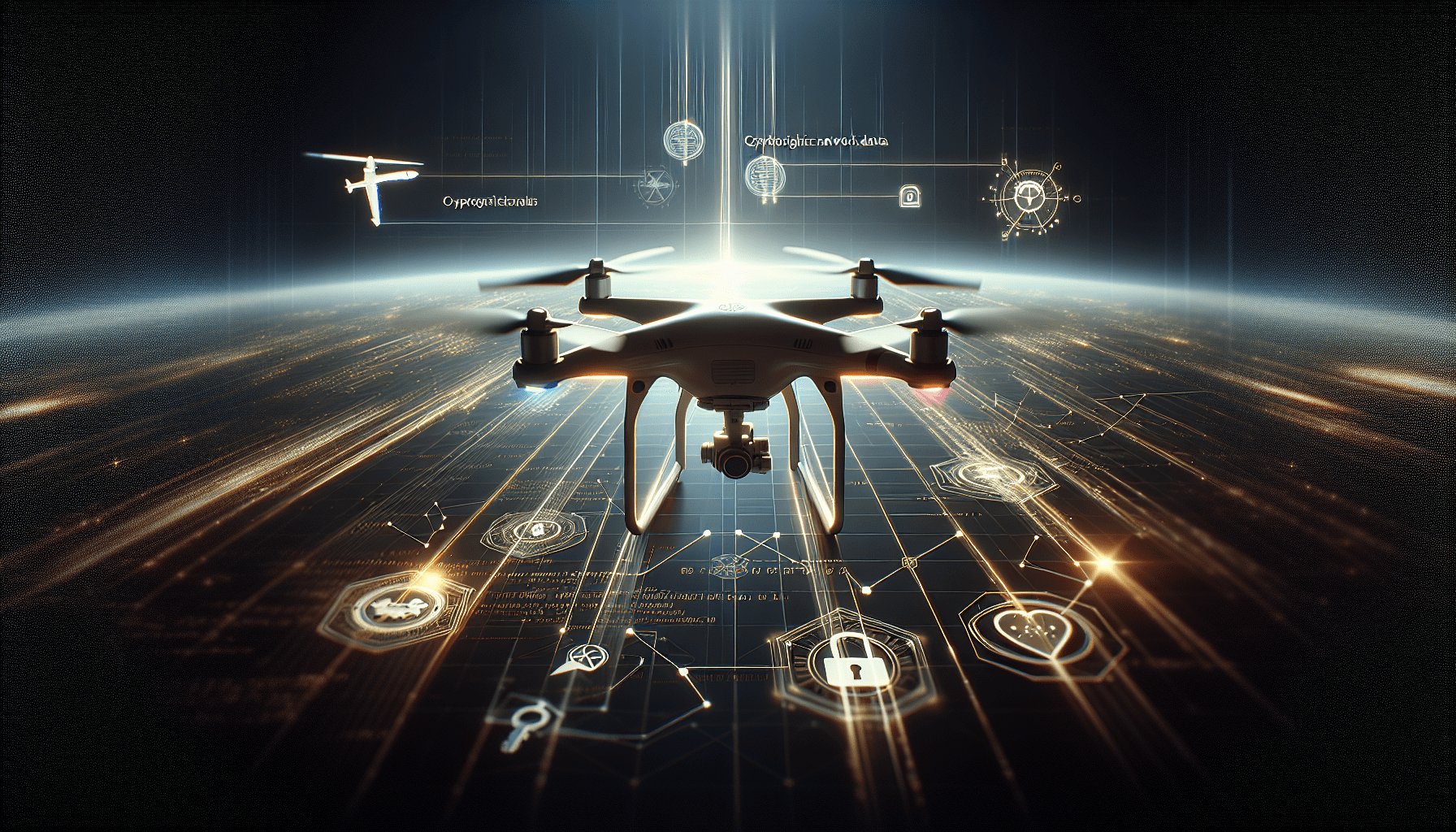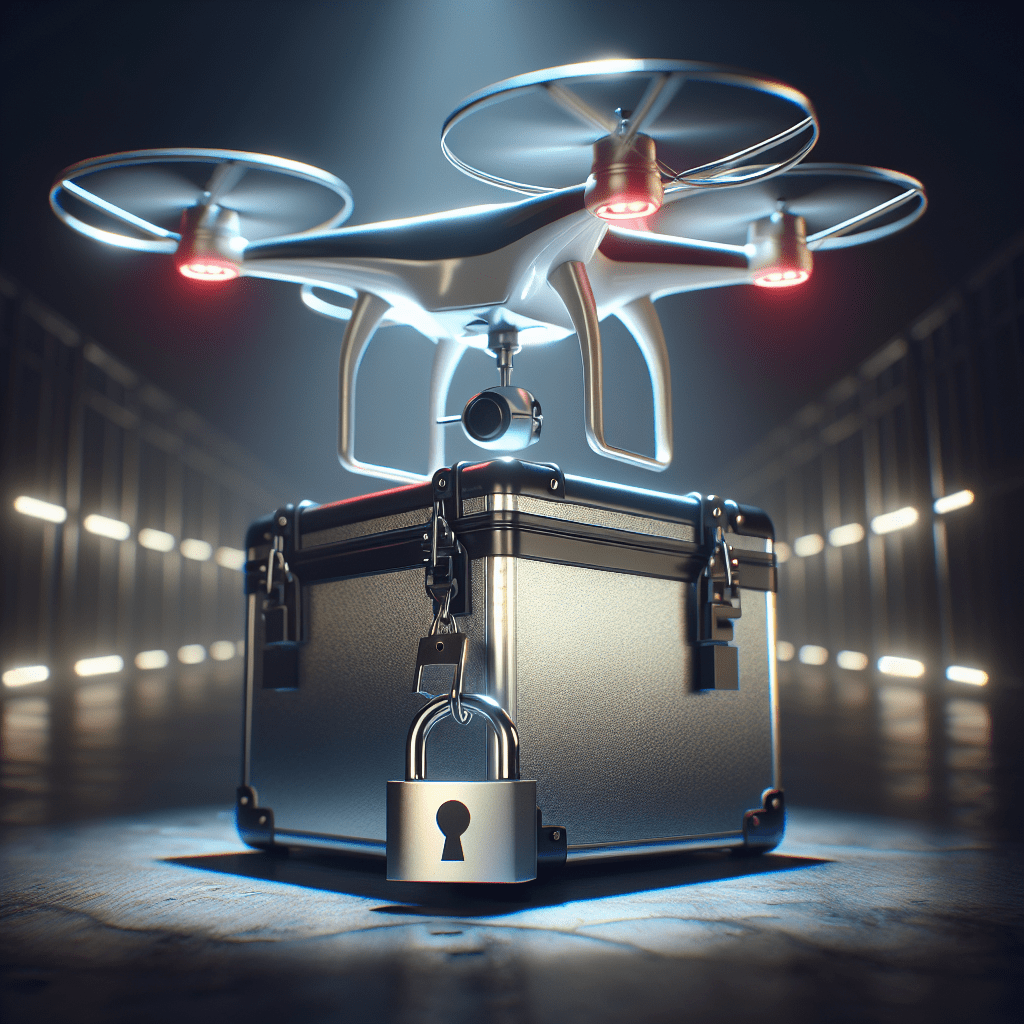Understanding Drone Data Security
Drone data security refers to the measures that ensure the safe handling and protection of information collected by drones during operations. As drones capture images, video footage, and other data, the risk of exposing sensitive information grows. Aerial footage can inadvertently capture private property, individuals, and confidential activities without explicit consent. Hence, it is imperative for all drone operators, whether hobbyists or professionals, to understand the significance of data security.

Importance of Secure Data Transmission
The transmission of data from a drone to the pilot’s device often occurs via radio waves or Wi-Fi. If these communications are not securely encrypted, malicious actors can intercept the data easily. This can lead to unauthorised access to sensitive information, posing major privacy and security risks. For instance, if a drone captures footage of a private event, but fails to encrypt its transmissions, anyone with the right tools can eavesdrop and collect this sensitive data. Hence, ensuring strong encryption protocols is paramount in drone operations.
Storage and Handling of Aerial Footage
Once data is captured by a drone, it is often stored on SD cards or hard drives before being processed or uploaded. These storage devices must be adequately secured due to the risk of physical theft or loss. Data can be compromised if a drone operator were to misplace a device containing sensitive footage of individuals or private properties. To mitigate risks, drone users should consider adopting secure filing systems, regularly changing passwords, and using secure backups to protect their data.
Privacy Risks of Drone and Aerial Surveillance
As drones increasingly find roles in surveillance, notable privacy concerns have surfaced. Drones can capture high-resolution images and videos from altitudes that would otherwise provide a level of anonymity to subjects below. Such capabilities can lead to unwanted surveillance, especially if drones are operated without the requisite knowledge or adherence to privacy laws.
“Privacy can be breached effortlessly when drones are misused, showcasing the need for regulations governing aerial operations.”
The Challenge of Consent
One of the primary privacy risks associated with drone usage is the failure to obtain consent from individuals before capturing their images or footage. This raises ethical questions surrounding the right to privacy, especially in private spaces where individuals expect a degree of confidentiality. In numerous regions worldwide, laws exist that address the capturing of drone footage, yet the enforcement and public awareness around these regulations can often be inadequate. This means many drone operators may inadvertently infringe on privacy rights, underscoring the importance of understanding the legal landscape before engaging in aerial filming.
Potential for Data Mishandling
Beyond consent issues, the handling of captured data opens another front for privacy risks. Once aerial footage is obtained, it may be used for purposes differing from the original intent. For instance, footage initially captured for recreational purposes could be sold or shared without adequate controls, exposing individuals to unwanted attention or harm. Thus, drone users must be conscientious about their data handling practices, implementing protocols to govern how data is stored, shared, and disposed of once it has served its purpose.
Safety Considerations for Aerial Filming and Drone Usage
While understanding privacy concerns is crucial, it is equally important to consider the operational safety of drones during filming. The complexity of drone navigation and the environments in which they operate necessitate strict adherence to safety protocols to ensure both operator and public safety.
Adhering to Local Regulations
Each country has its own regulations regarding drone flights, significantly influencing the safety of aerial filming. Operators must familiarise themselves with these regulations, including no-fly zones, altitude limits, and flight restrictions. For example, in the UK, the Civil Aviation Authority (CAA) provides guidelines that govern drone usage. Failure to comply with these rules not only endangers individuals nearby but can lead to fines or legal repercussions for the operator. Thus, knowing the local drone laws and abiding by them is essential to safeguarding one’s aerial operations.
Safety Practices for Flying Drones
Before launching a drone for aerial filming, operators should conduct pre-flight checks to ensure that equipment is functioning correctly. This includes examining the battery life, GPS connectivity, and overall drone condition. Practicing good flying habits, such as maintaining line-of-sight with the drone and monitoring battery levels throughout the flight, can help prevent accidents from occurring. Moreover, considering the environment where the drone is flying, including potential obstacles and changing weather conditions, can play a significant role in ensuring a safe operational experience.
Do Drones Save Footage? Understanding Data Retention
Understanding how drones handle data retention is essential for responsible drone usage. Most drones are equipped with onboard storage solutions, typically in the form of removable SD cards or internal storage options. This capability allows operators to save high-quality footage for later viewing or use. However, this immediate access also raises questions regarding data retention policies and best practices.
Best Practices for Data Management
To maintain the integrity of captured footage, drone operators should establish a clear data management protocol. This includes regular data backups to secure cloud storage or external drives, ensuring that the information is safely stored away from potential loss or damage. Furthermore, operators should be transparent about data retention length, especially if the footage captures sensitive information about individuals or properties. Setting clear expiration dates for how long footage will be maintained and ensuring its secure deletion is paramount to upholding ethical data practices.
Using Drones for Surveillance: Ethical Considerations
The use of drones for surveillance purposes raises critical ethical concerns that extend beyond data retention. While drones offer enhanced monitoring capabilities for security or public safety, deploying them in public spaces must be done responsibly. When utilising drones for surveillance, operators must consider the implications of continuous monitoring, the potential for profiling, and the balance of public safety with individual privacy. Adopting best practices that incorporate transparency, accountability, and compliance with relevant laws will ensure that surveillance is carried out ethically and respectfully.
Conclusion: Ensuring Drone Data Security
Drone technology presents unparalleled opportunities, but with these possibilities come significant responsibilities for operators. As the drone landscape continues to evolve, so too must the measures in place to protect captured data from breaches and misuse. Understanding the privacy risks associated with aerial surveillance, adhering to local regulations, and implementing robust data management practices are critical to ensuring the security of drone-collected information. Ultimately, it is essential for all drone operators to equip themselves with the knowledge and tools to navigate these challenges, ensuring they can safely and ethically maximise the capabilities of drone technology.
Frequently Asked Questions
How can I secure my drone’s data?
- Ensure you use encrypted data storage solutions and regularly update your drone’s firmware to protect against vulnerabilities.

